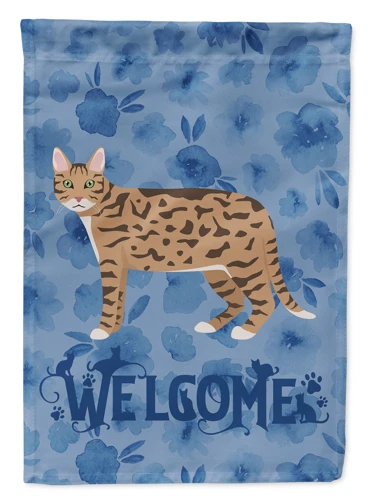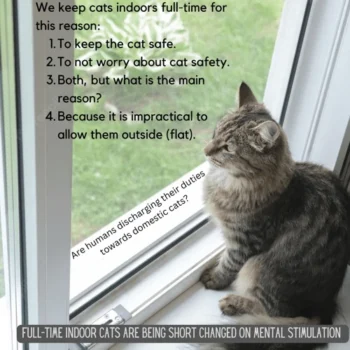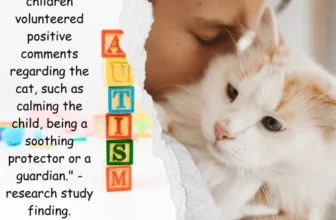As parents, we always want what’s best for our children – a happy, safe, and healthy environment where they can grow and develop. Many families choose to have pets as part of their household, and a California Spangled cat can be an excellent addition to any home with kids. However, as with any pet, it’s essential to create a safe and happy environment for both your cat and your children. In this article, we’ll explore the benefits of having a California Spangled cat for kids and provide step-by-step guidance on how to prepare your home, introduce your cat to your children, and engage in fun activities together.
Benefits of a California Spangled Cat for Kids

As parents, we always want the best for our kids, and sometimes that means adding a furry friend to the family. If you’re considering getting a pet that is both loving and playful, a California Spangled Cat could be the perfect addition to your household. Not only are they beautiful, but they also have numerous benefits for kids. Let’s explore some of the ways a California Spangled Cat can enhance your child’s life and emotional development. To ensure a harmonious relationship between kids and cats, we will provide practical advice on how to introduce them, create a safe environment, and instruct children on how to interact with their feline friends. For more information on teaching your California Spangled Cat proper behavior, check out our article on raising a well-behaved California Spangled Cat, and for tips on teaching kids responsibility through pet ownership, read our guide on raising California Spangled cats with responsible kids.
1. Companion and Friend
Having a California Spangled cat as a companion and friend can benefit children in various ways. Firstly, these cats are known for their affectionate and loyal nature, providing great company for children of all ages. They love to cuddle and play with their human family members, which can be comforting for kids who need a friend to talk to or hang out with.
Secondly, having a California Spangled cat can teach children responsibility. Taking care of a pet requires feeding, grooming, and playing with them regularly, which can help children learn to be responsible and reliable.
Thirdly, as children spend time with their feline playmate, they develop empathy as they observe and learn to understand their cat’s behavior and emotions. This can help children develop a better understanding of their own emotions and how to deal with them effectively.
Lastly, having a California Spangled cat can keep kids active and entertained as they engage in playtime with their furry friend. These cats are playful and energetic, making them great companions for kids who love to play and move around. They can also be excellent sources of amusement for children, especially when they invent games to play together.
A California Spangled cat can be a wonderful addition to a family with children, providing companionship, teaching responsibility, developing empathy, and offering hours of fun entertainment. It’s no wonder that many families choose these cats as their go-to pet! If you’re considering raising a California Spangled cat with kids, be sure to check out our article on tips for raising California Spangled cats with kids to ensure a happy and safe environment for both your child and furry friend.
2. Teaches Responsibility
Having a California Spangled Cat at home can be a great way to teach children about responsibility. Children can learn about feeding, grooming, and taking care of the cat’s litter box. By helping out with these tasks, they develop a sense of responsibility towards their pets and learn to empathize with other living beings.
Here are some ways a California Spangled Cat can teach children about responsibility:
- Feeding – Assign your child the task of feeding the California Spangled Cat. Teach them about portion control and how to read food labels. This will not only teach them about feeding their pet but also about healthy eating habits.
- Grooming – Show your child how to groom the cat, including brushing its fur and trimming its nails. The grooming process can be a calming activity for both the child and the cat.
- Cleaning – Teach your child how to clean the cat’s litter box. This will help them understand the importance of hygiene and cleanliness.
- Exercise – Encourage your child to play with the California Spangled Cat, which will help keep the cat active and healthy. This is also a great way for children to get exercise themselves, as cats are usually very active and playful.
Teaching responsibility can also help children learn about consequences. If they forget to feed the cat or clean the litter box, the cat may become ill or unhappy. This can teach kids about cause and effect, and the importance of taking care of others.
By providing children with the opportunity to take care of a pet like a California Spangled Cat, they can learn important life skills that can help them in the future. Taking care of pets can help children learn kindness and empathy towards animals and other humans alike.
If you want to learn more about teaching kindness towards animals to children, check out our article on how to teach kids kindness towards animals using California Spangled Cats.
3. Develops Empathy
When children grow up with a California Spangled cat, they get the chance to develop empathy in a very practical way. Empathy is the ability to recognize and understand the emotions of others, and it’s an essential life skill that helps children develop healthy relationships. Caring for a pet can help kids learn how to empathize with other living creatures, which can translate into better relationships with their peers, family members, and even strangers.
One way that cats can help kids develop empathy is by their natural behavior. When a cat is upset, they will often hide or avoid contact with people. This behavior allows children to recognize that the cat is upset and understand that they need space. Learning to respect the cat’s space and feelings teaches children the importance of boundaries and respect for others’ emotions.
Additionally, caring for a California Spangled cat requires attention, patience, and compassion. Children who learn how to care for their cat’s needs are developing essential life skills that will serve them well into adulthood. For instance, understanding how to feed a cat, keep their litter box clean, and provide them with fresh water teaches children responsibility and compassion. Interacting with a California Spangled cat can teach children how to respond to different expressions and cues from the cat, which can eventually lead to a strong bond between the two.
Raising a California Spangled cat alongside children can help develop empathy in children in a practical way, allowing them to learn to be more understanding towards other living creatures. The natural behaviors of a cat combined with caring for its needs can help children learn compassion, patience, and responsibility. Such qualities are not only beneficial to the child but also an essential aspect of living in a harmonious society.
4. Keeps Kids Active and Entertained
California Spangled cats are not only good companions, but they are also perfect playmates for kids. Kids tend to have boundless energy and a California Spangled cat can keep up with them. These cats are active and playful, which means they can keep your children engaged in playtime. As a result, California Spangled cats can help kids stay active and healthy.
Playing with a California Spangled cat can also be highly entertaining for kids. These cats love attention and will often initiate playtime with their owners. This can be a great source of laughs and entertainment for kids, especially during long periods spent indoors. Additionally, interacting with pets has been shown to reduce stress and promote relaxation, making a California Spangled cat a great stress-reliever for children.
It is important to note that interaction with animals can help in child development. By engaging in playtime with a cat, kids can learn how to communicate, empathize, and develop their social skills. As the cat becomes part of their daily routines, and they learn to interpret their body language, kids can also develop a deeper understanding of nature and animals.
A California Spangled cat can be a source of joy, entertainment, and healthy physical activity for your kids. However, it is important to ensure that both kids and cats are safe during playtime. Follow child safety tips when introducing your cat to children and supervise their interaction to avoid any accidents. This way, kids and cats can enjoy each other’s company and strengthen their bond for many years to come.
Preparing Your Home for Kids and Cats

As much as California Spangled Cats can bring joy and companionship to kids, it is imperative to create a safe and happy environment for both the feline and the young ones. Childproofing the house and teaching kids how to approach and play with the cat is a crucial step in ensuring harmony in the household. With a few practical tips and ground rules in place, you can create a fulfilling life for your cat and kids. Let’s delve into preparing your home to cater to both your California Spangled cat and kids. Don’t forget to check out our previous article on how these cats entertain kids.
1. Childproof Your Home
Creating a safe environment for both your kids and California Spangled cat means taking measures to childproof your home. This will prevent any accidental harm or damage to property from happening. Here are some tips to help you childproof your home:
- Secure cabinets and drawers: Install safety latches on all your cabinets and drawers to prevent your cat or kids from accessing hazardous materials like cleaning supplies, sharp objects like knives, or potentially dangerous items like medicines.
- Cover electrical outlets: Make sure all electrical outlets are covered or blocked off to protect young kids from electric shock or burns. Unplugging appliances when they are not in use is also a good practice.
- Keep breakable items out of reach: Move any fragile or breakable objects to higher shelves or cabinets, out of reach of young children or curious cats that may accidentally knock them over.
- Eliminate hazardous houseplants: Certain houseplants can be toxic to cats or kids if ingested, so make sure to remove them or place them out of reach. Some common toxic houseplants include lilies, daffodils, and poinsettias.
- Secure windows and doors: Install window screens on all windows and make sure doors are securely closed at all times to prevent your cat or kids from escaping or falling out of windows.
Childproofing your home is just one important step in creating a safe and happy environment for your kids and California Spangled cat. By taking the necessary precautions and being vigilant about potential hazards, you can ensure that everyone in your home is safe and well-protected.
2. Create Safe Spaces for Both
Creating safe spaces for both your California Spangled cat and children in your home is crucial in maintaining a happy and healthy environment for everyone. Here are some ways to ensure a safe space for both:
| Solution | Description |
|---|---|
| Provide Personal Space | Children should be taught to respect the personal space of their feline friends. Provide your cat with a separate area to sleep, eat, and play that is off-limits to children. This will give your cat a sense of security and a place to retreat to when feeling overwhelmed. |
| Use Baby Gates | Baby gates are an excellent way to create boundaries between your California Spangled cat and children. Place baby gates in areas where your cat can access but your children cannot, such as the litter box area. This will keep your cat’s area clean and prevent your little one from coming into contact with any harmful materials. |
| Store Away Hazardous Products | Store any hazardous household products such as cleaning agents and medicines out of reach of both children and cats. Cats are notorious for getting into things they shouldn’t, and children are curious by nature. Keep these items locked away in cabinets or high on shelves. |
| Secure Cords and Wires | Loose cords and wires can be a hazard to curious cats and children, which may lead to electrocution or choking. Secure cords and wires with cord wrappers or covers and place them out of reach of both your cat and children. This will not only prevent accidents but will also keep your home looking neat and tidy. |
| Use Soft Surfaces | Encourage your cat and children to play on soft surfaces such as carpets, rugs, and designated play areas. This will reduce the risk of injury to both your cat and children when jumping or playing. Ensure that furniture is secure and stable to prevent any accidents. |
By creating safe spaces for both your California Spangled cat and children, you can ensure that everyone is happy, healthy, and protected from potential hazards. These safety precautions will give you peace of mind while allowing your cat and children to explore and play in a secure environment.
3. Teach Kids How to Approach and Play with Your Cat
Teaching kids how to approach and play with your California Spangled cat is essential to creating a safe and happy environment for both your pet and your child. Below are some tips on how to do this.
| Tip | Description |
|---|---|
| 1. Demonstrate Proper Techniques | Show your child how to approach and pet your cat gently, using slow and steady strokes in the direction of the fur. Encourage them to be calm and quiet around the cat, and avoid yelling or sudden movements that could startle your feline friend. |
| 2. Focus on Body Language | Teach your child to observe your cat’s body language, particularly signs of stress or discomfort, such as flattened ears, dilated pupils, or hissing. Explain that if the cat seems unhappy or agitated, it’s best to give them space and avoid handling them until they’ve calmed down. |
| 3. Don’t Force Interaction | Remind your child that cats are independent animals and may not always be in the mood for play or cuddles. Encourage them to respect your cat’s boundaries and avoid forcing interaction if the cat seems uninterested or uncomfortable. |
| 4. Avoid Rough Play | Explain to your child that cats are not toys, and it’s important to avoid rough play, such as pulling the cat’s tail or ears, or chasing them around the house. Teach them to use appropriate toys and games for playtime, and avoid using their hands or feet as playthings. |
By following these tips and teaching your child how to approach and play with your California Spangled cat safely and respectfully, you’ll ensure that both your pet and your child can enjoy a happy and harmonious relationship.
4. Set Rules and Boundaries
Setting Rules and Boundaries for Kids and California Spangled Cats
It’s important to set clear rules and boundaries for your kids and California Spangled Cat to ensure a safe and happy environment. Consider the following guidelines:
- Teach Kids to Respect the Cat’s Space: Make sure your kids understand that your cat needs to have her own space where she can rest and relax without being bothered. This can be a bed or a designated “cat-only” area in your home where your kids won’t disturb her.
- Limit Rough Play: Physical play is natural for kids, but it can be dangerous for cats. Teach your kids to gently play with your cat and avoid rough play, such as pulling her tail or ears.
- Monitor Feeding Time: Supervise your kids during feeding time to ensure that they don’t bother your cat while she eats. Encourage your kids to fill your cat’s food and water bowls daily, but remind them not to overfeed her.
- Keep Your Cat Indoors: California Spangled Cats are indoor cats and should be kept inside the house. Teach your kids to never let the cat outside and supervise your kids when they open doors or windows to prevent your cat from escaping.
- Establish Quiet Time: Your cat needs a break from noise and activity just like your kids do. Establish quiet time each day where your cat can relax without any interruptions. Encourage your kids to engage in quiet activities during this time, such as reading or coloring.
By setting rules and boundaries for your kids and California Spangled Cat, you can create a safe and happy environment for both of them to enjoy. Remember to monitor their interactions and adjust the rules as needed to ensure that everyone is comfortable and happy.
5. Supervise Playtime and Interaction
One of the most important things that you can do when it comes to creating a safe and happy environment for your kids and your California Spangled Cat is to supervise playtime and interaction between them. This means that you should always be there to monitor how your child is interacting with your cat, especially when they are playing together.
To make it easier to keep an eye on things, you can create a schedule for when your child and cat can play together. You can set aside specific times during the day when your child can interact with your cat and make sure that they are always supervised during these times. You can also use this schedule to make sure that your cat is getting enough alone time and rest.
Additionally, you should teach your child appropriate behavior when playing with your cat. This includes not pulling their tail or ears, not hitting or kicking them, and not bothering them when they are sleeping or eating. You should also teach your child to recognize when your cat is getting tired or overstimulated, and to give them space and alone time when needed.
To further ensure that your child and cat are interacting safely, consider setting up a play area for them. This can be a designated space in your home where your cat can play with your child under your supervision. Make sure that this area is safe and free of any hazards like sharp objects or toxic substances.
Lastly, remember that cats can sometimes be unpredictable, so it is important to always be prepared to intervene if necessary. This may mean separating your child and cat if they are not getting along or if your cat is becoming aggressive. By supervising playtime and interaction, you can keep your child and cat safe and happy together.
| How to supervise playtime and interaction: |
|---|
| Create a schedule for playtime with your child and cat |
| Teach appropriate behavior to your child when playing with your cat |
| Set up a designated play area for your child and cat |
| Be prepared to intervene if necessary |
6. Keep Your Cat Indoors
As a responsible pet owner, it’s important to keep your California Spangled Cat indoors, especially if you have kids. Here are some reasons why indoor-only cats are safer and healthier.
| Reasons to Keep Your Cat Indoors | Explanation |
|---|---|
| Protection from Outdoor Dangers | Outdoor cats are vulnerable to traffic accidents, attacks by other animals, and exposure to communicable diseases. Keeping your cat indoors can protect them from these risks and potentially save their life. |
| Reduced Stray Cat Population | Allowing your cat to roam outside contributes to the population of stray cats, which can have negative impacts on the native wildlife and ecosystem. Keeping your cat indoors can help reduce the number of stray cats and promote a healthier environment. |
| Prevention of Fights and Injuries | Outdoor cats are more likely to get into fights with other cats, resulting in injuries and potentially expensive veterinary bills. Indoor cats are less likely to get into fights and are generally safer and healthier. |
| Easier to Monitor Health and Behavior | Indoor cats are easier to monitor for changes in behavior or health issues. This enables early detection and treatment of any potential problems, which can prolong and improve your cat’s quality of life. |
| Protection of Wildlife | Indoor cats are unable to hunt and kill wildlife, which is important for maintaining the delicate balance of the ecosystem. By keeping your cat indoors, you are helping to protect birds and other small animals from unnecessary harm. |
As you can see, keeping your California Spangled Cat indoors is not only beneficial for their health and well-being, but also for the environment as a whole. Creating an enriching indoor environment, including playtime and interactive toys, can help keep your cat happy and active while also ensuring their safety.
Introducing Your California Spangled Cat to Kids

Bringing a new California Spangled cat into your home can be an exciting experience for both you and your kids. However, the process of introducing your feline friend to your children requires some preparation and patience. It is important to take things slow and ensure that both your cat and kids are comfortable throughout the introduction process. In this section, we’ll provide some helpful tips for introducing your California Spangled cat to your kids in a calm and stress-free manner.
1. Start Slow and Gradual
Introducing your California spangled cat to kids can be an exciting and rewarding experience for both your cat and child, but it’s important to start slow and gradual. Sudden movements or loud noises can startle cats, so it’s important to create a calm and controlled environment. Here are some steps to ensure a successful introduction:
1. Create a Safe and Comfortable Space: Before introducing your cat to your child, create a safe and comfortable space for your cat to retreat to. This could be a separate room or a cozy cat bed in a quiet corner of the room. Make sure your cat has access to food, water, and a litter box.
2. Let Your Cat Approach: Allow your cat to approach your child on their own terms. Cats are naturally curious animals and will approach in their own time. Encourage your child to let the cat come to them rather than approaching the cat.
3. Involve Your Child: Once your cat is comfortable around your child, involve your child in playtime. Start with short, supervised play sessions and encourage your child to use toys or treats to engage with the cat.
4. Reward Good Behavior: Reward your cat and child for good behavior during playtime and interaction. This could be a small treat or praise for calm and respectful behavior.
5. Patience is Key: Remember to be patient. Each cat has their own personality and temperament, so it may take some time for your cat to warm up to your child. Don’t force interaction or play – let your cat choose when they’re ready.
By following these steps, you can create a positive and comfortable environment for both your child and California spangled cat to thrive in.
2. Use Positive Reinforcement
Positive reinforcement is a powerful tool in creating a happy and healthy relationship between your California Spangled cat and your children. Instead of punishing negative behavior, it’s more effective to reward positive behavior with treats, petting, and praise. This helps to encourage your cat to repeat good behavior. Below are some tips on how to use positive reinforcement effectively:
| Tips for Using Positive Reinforcement |
|---|
| 1. Be Consistent: Consistency is key when using positive reinforcement. Make sure to reward your cat every time they exhibit good behavior, and ignore behaviors you don’t want to encourage. |
| 2. Reward Immediately: It’s important to reward good behavior immediately after it happens, so your cat knows what they are being rewarded for. |
| 3. Use High-Value Rewards: Use treats or other rewards that your cat really enjoys to make the positive reinforcement more effective. |
| 4. Keep Rewards Varied: Keep the rewards varied, so your cat doesn’t get bored or learn to expect only one type of reward. |
| 5. Avoid Punishment: Avoid punishing your cat for negative behaviors, as this can lead to fear and anxiety. |
By using positive reinforcement, you can create a positive association between your California Spangled cat and your children, and help to reinforce good behavior. Remember to be patient, consistent, and use high-value rewards to encourage your cat to exhibit good behavior. With time and dedication, positive reinforcement can help to create a happy and healthy household for both your cat and your children.
3. Encourage Calm and Respectful Interaction
When introducing your California Spangled Cat to kids, it is important to encourage calm and respectful interaction. This will not only keep your cat safe but also teach children to respect animals.
One way to encourage respectful interaction is to teach kids to approach the cat slowly and calmly. Sudden movements or loud noises can startle cats and make them feel threatened.
Another important aspect of respectful interaction is teaching kids to read your cat’s body language. For example, if the cat’s ears are back or their tail is twitching, it may indicate that they are feeling anxious or uncomfortable. Encourage kids to give the cat space and avoid interacting with them at that moment.
Additionally, teach kids to pet the cat gently. Most cats prefer to be petted on their head or chin area and may not enjoy being petted on their belly or tail. Show kids how to pet the cat in a way that they enjoy.
It is also important to teach kids not to grab or pull on the cat’s tail, ears, or fur. This can be painful for the cat and may cause them to lash out in defense.
To summarize, when encouraging calm and respectful interaction between kids and your California Spangled Cat, it is important to:
| Approach the cat slowly and calmly |
| Teach kids to read your cat’s body language |
| Pet the cat gently |
| Teach kids not to grab or pull on the cat’s tail, ears, or fur |
By following these tips, you can create a happy and safe environment for both your California Spangled Cat and kids.
4. Let Your Cat Set the Pace
Allowing your California Spangled cat to set the pace when it comes to interacting with kids is an important aspect of creating a safe and happy environment for both. Here are a few tips on how to accomplish this:
- Pay attention to your cat’s body language: Cats communicate through their body language, so it’s important to observe and understand your cat’s cues. If your cat seems nervous or agitated around kids, give them space and let them come to the children on their own terms.
- Don’t force interaction: Avoid insisting that your cat must engage with your children if they are not comfortable doing so. Forcing interaction can cause fear and anxiety in your cat and lead to negative consequences, such as scratches or bites.
- Provide a retreat space: Make sure your cat has a safe, comfortable space to retreat to if they feel overwhelmed or overstimulated by the presence of children. This could be a cozy bed in a quiet room or a high perch they can escape to when needed.
- Be patient: Some cats may take longer to warm up to kids or may never be comfortable around them. It’s important to be patient and respect your cat’s boundaries, even if it means limiting the amount of interaction they have with children.
By allowing your California Spangled cat to set the pace when it comes to interacting with kids, you are creating a safe and positive environment for both your cat and your children. By paying attention to your cat’s body language and respecting their boundaries, you can help your cat feel more comfortable around kids and foster a stronger bond between your cat and your family.
Activities and Games Kids Can Play with Your California Spangled Cat
Are you looking for fun and engaging ways to bond with your California Spangled cat while also keeping your kids entertained? Look no further! Here are some interactive activities and games that both your kids and cat will love. From thrilling feather wand play to stimulating puzzle toys, your family is sure to have a blast together. Let’s explore some creative ways to keep your California Spangled cat active and happy while bonding with your kids.
1. Feather Wand Play
One of the best activities that kids can enjoy with their California Spangled Cat is feather wand play. This game is not only fun for the cat, but also helps develop their hunting skills, coordination, and exercise.
To play feather wand with your cat, you will need a feather wand toy. You can easily purchase this toy on online pet stores or local pet shops. The toy consists of a long wand with feathers attached to the end.
How to play feather wand with your California Spangled Cat:
| Step | Description |
|---|---|
| 1 | Hold the feather wand toy in your hand and dangle the feathers in front of your cat. |
| 2 | Slowly move the feather wand to simulate the movement of a bird or prey. |
| 3 | Encourage your cat to pounce and chase the feathers. |
| 4 | Let your cat catch the feathers every once in a while to keep them engaged and motivated. |
| 5 | Once your cat has had enough, slowly and gently put the toy away. |
It’s important to note that some cats may get too excited and play rough during feather wand play. It’s crucial to set boundaries and prevent your cat from biting or scratching you. Always supervise playtime to avoid accidents and make sure your cat is not overly tired or stressed.
Feather wand play is a great way to bond with your California Spangled Cat while also providing them with essential exercise and stimulation. Try different feather patterns and movements to keep the game interesting and enjoyable for both you and your feline friend.
2. Laser Pointer Chase
If you’re looking for a fun game to play with your California Spangled cat, then laser pointer chase can be a great option! This game can keep your cat entertained for hours on end and can help them burn off some of their energy. Here are some tips for playing laser pointer chase with your cat:
| Tip | Description |
|---|---|
| 1. Use a high-quality laser pointer | Invest in a good quality laser pointer to ensure that it is safe for your cat’s eyesight. Avoid using low-quality or children’s laser pointers. |
| 2. Point the laser away from your cat’s eyes | When playing with the laser pointer, ensure that the beam doesn’t shine directly in your cat’s eyes as it can cause damage to their vision. |
| 3. Let your cat catch the “prey” | Allow your cat to catch the dot or beam of light occasionally. This will help them feel like they’ve accomplished something and keep them engaged in the game. |
| 4. End the game on a positive note | Don’t abruptly stop playing the game, instead, let your cat “catch” the dot and then reward them with a treat or affection. |
| 5. Play in a safe environment | Avoid playing laser pointer chase in areas where your cat could bump into furniture or other objects, as this may cause injury to your cat. |
Playing laser pointer chase with your California Spangled cat can be a lot of fun for both you and your feline friend. However, it’s important to remember that it’s just a game and shouldn’t substitute for quality time spent bonding with your pet in other ways.
3. Hide and Seek
Hide and seek is a classic game that can be adapted to play with your California Spangled cat. Here are some steps to follow:
Step 1: Choose a room in your home that has a few hiding spots, such as behind furniture or under a table.
Step 2: Bring your cat to the room and ask your child to help you find the cat. Make sure your child does not make loud noises or sudden movements that may scare the cat.
Step 3: Once your child finds the cat, give them a treat. This positive reinforcement will encourage your cat to play along in future games.
Step 4: Now it’s time for your cat to be the seeker. Tell your child to find a hiding spot and give them a treat when they are found.
Step 5: Rotate roles between your cat and your child to keep the game fun and engaging.
Playing hide and seek with your California Spangled cat will not only provide entertainment but also helps to strengthen the bond between your cat and your child. Remember to supervise playtime and ensure that your child is gentle and respectful towards your cat at all times.
4. Puzzle Toys
Puzzle toys are a great way to keep your California Spangled cat entertained and mentally stimulated. They come in various shapes and sizes, and using them for playtime with your cat will help to sharpen their problem-solving and critical-thinking skills. Here are some great options for puzzle toys to introduce to your cat:
- Treat Dispenser Balls: These toys have small holes where you can insert dry cat food or treats, and as your cat bats the ball around, they will be rewarded with a tasty surprise. This is a great option for cats who are highly food motivated.
- Interactive Feeders: These are puzzle toys that hold your cat’s food and require them to work to get the food out. Some interactive feeders require the cat to use their paws to scoop out the food, while others may require the cat to use their problem-solving skills to manipulate levers or doors.
- Hide-and-Seek Toys: These are toys that have small compartments where you can hide treats or toys for your cat to find. This type of toy encourages your cat to use their sense of smell and problem-solving skills to locate the hidden items.
- Maze Toys: These toys are designed to challenge your cat’s problem-solving skills by requiring them to maneuver a ball or other small item through a maze or labyrinth to reach the end.
All of these puzzle toys are great for keeping your California Spangled cat active and stimulated, while also providing a fun and rewarding experience for both you and your pet. Be sure to supervise playtime with these puzzle toys, and remember to switch up the toys every so often to keep your cat engaged and interested.
5. Training Exercises
Training exercises are not just for dogs; California Spangled Cats can also benefit from some behavioral training. Here are some training exercises that can help enhance the bond between your child and your cat:
- Teaching commands: While cats may not be as obedient as dogs, they can still learn basic commands like “come” and “sit.” Use positive reinforcement, such as treats and praise, to encourage your cat to follow your commands.
- Clicker training: Clicker training involves using a clicker as a signal to mark the behavior you want your cat to repeat. Pair the click with a treat to motivate your cat to perform desired behaviors.
- Training with puzzle toys: Puzzle toys are not only great for keeping your cat entertained, but they can also be used as a training tool. Encourage your cat to figure out how to solve the puzzle toy, rewarding them with treats when they succeed.
- Playing dead: Teaching your cat to “play dead” is a fun trick that can impress your child. Use treats to lure your cat into a lying down position and reward them when they stay still, gradually increasing the time they stay in this position.
Keep in mind that training should always be done with positive reinforcement and patience. Don’t punish your cat for not following commands as this can damage the trust and bond between your cat and child. With consistent practice and motivation, your California Spangled Cat can become a well-trained and happy pet.
Conclusion
In conclusion, welcoming a California Spangled Cat into your home can be a wonderful experience for both kids and adults. Not only do these cats make great companions and friends, but they also teach valuable lessons about responsibility and empathy. It’s important to prepare your home and create a safe environment for both kids and cats, and to set rules and boundaries to ensure that everyone is happy and healthy.
Introducing your California Spangled Cat to kids should be done slowly and with positive reinforcement, encouraging calm and respectful interaction. Once your cat is comfortable with your children, there are plenty of fun activities and games that kids can enjoy with their feline friend, including feather wand play, laser pointer chase, hide and seek, puzzle toys, and training exercises.
Overall, with the right preparation and care, a California Spangled Cat can bring joy and love to your family for many years to come. Remember to always prioritize the safety and well-being of both your children and your cat, and you’ll be rewarded with a happy and harmonious home. So why not consider adopting a California Spangled Cat and see for yourself the benefits that these beautiful creatures can bring to your family?
Frequently Asked Questions
1. Are California Spangled Cats good with kids?
Yes, California Spangled Cats are known for being friendly, social, and playful, making them great companions for kids.
2. Do California Spangled Cats require a lot of maintenance?
While California Spangled Cats don’t require extensive grooming, they do need regular playtime and exercise to maintain their physical and mental health.
3. Can California Spangled Cats be trained?
Yes, California Spangled Cats are intelligent and can be trained using positive reinforcement methods.
4. How can I childproof my home for a California Spangled Cat?
Make sure to keep small objects and hazardous substances out of reach of both children and cats. Use child-safety locks on cabinets and keep wires and cords secured and hidden.
5. Is it safe for kids to play with laser pointers around cats?
No, laser pointers can be harmful to a cat’s eyes and should not be used as a toy. Opt for safer alternative toys such as feather wands or puzzle toys.
6. Should I introduce my California Spangled Cat to kids slowly?
Yes, it’s important to introduce a new cat to children gradually to ensure a positive and safe relationship between the two.
7. Can California Spangled Cats be indoor pets?
Yes, California Spangled Cats are perfectly content living indoors as long as they have plenty of space to play and explore.
8. Should I supervise my child’s interactions with our California Spangled Cat?
Yes, it’s important to supervise playtime and interaction between kids and cats to ensure that both parties remain safe and happy.
9. Is it okay to let my California Spangled Cat roam freely outside?
No, it’s best to keep your California Spangled Cat indoors to ensure their safety and to prevent them from harming wildlife.
10. Can California Spangled Cats be left alone with kids?
No, it’s important to always supervise interactions between children and cats to ensure that both parties remain safe.







